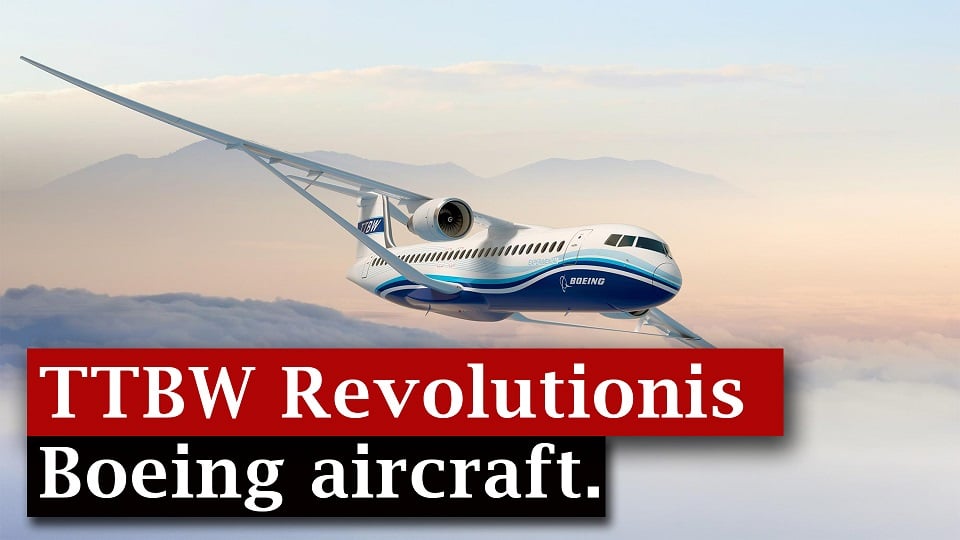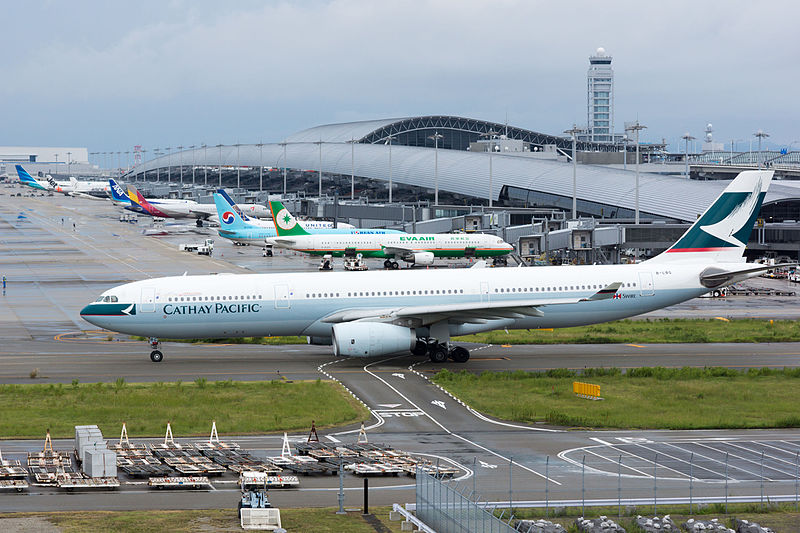Airlines
Will Boeing use NASA’s TTBW prototype to begin building short haul aircraft?

The full-scale Transonic Truss-Braced Wing, which is expected to fly by 2028, is being developed jointly by Boeing and NASA. This aircraft might set the pace for future advancements in the aviation industry. As with other commercial aircraft, the classic wing structure consists of a single, fixed frame. The new design will replace the existing method of attaching two frame structures to the fuselage, extending the length of the wing, adding additional strength, and improving stability and effectiveness.
The new design’s development is crucial for Boeing since it will maintain the footprints on small-segment aircraft while also achieving the most efficient aircraft that might result in a higher market share.
-
Increase fuel economy by 30%
The scale Transonic Truss-Braced Wing (TTBW) demonstrator aircraft has already been subjected to wind tunnel testing and other structural enhancements for the aircraft body parameters. Future designs will be influenced by the technology shown off and put to the test as part of the Sustainable Flight Demonstrator (SFD) initiative, which may result in ground-breaking aerodynamic and fuel efficiency improvements.
Depending on the mission, a single-aisle airplane with a TTBW layout could, when coupled with anticipated improvements in propulsion systems, materials, and systems architecture, cut fuel consumption and emissions by up to 30%.
This aircraft will serve approximately 50% of the commercial market which is short to medium whole single aircraft but we’re going to reduce as much is 30% the fuel consumption with better engines and look at this way longer and thinner and it’s so long and thin it Hass to have a breeze but you can actually get list on this brace as well as the way the old concept of the old biplane Stabilized by the braces that will make commercial airliners much more fuel efficient by creating less drag and in addition to the design the sustainable flight demonstrator will integrate multiple other related green technologies this configuration will save fuel.
-
Aircraft may have up to 130 seat capacity.
This aircraft will be classified as a small to medium-haul aircraft and can accommodate up to 100 to 130 seats, which is comparable to the E195-E2 seating capacity. Initial designs for aircraft will be tested in smaller sizes before gradually growing to larger ones. According to a NASA detail, an aircraft may receive a lift from both the upper and lower wing flaps.
Advanced propulsion systems, which are now constrained by a lack of underwing space in today’s low-wing airplane layouts, could potentially be accommodated by ultrathin wings braced by struts with bigger spans and higher aspect ratios. Boeing will combine brand-new components with existing car parts to create the prototype vehicle.
-
Funding for TTBW
The program jointly funded NASA’s funding through the SFD Space Act Agreement totaled $425 million. The SFD program will also leverage up to $725 million in funding from Boeing and its industry partners to shape the demonstrator program and meet the resource needs required. Separately, Boeing’s previous internal investments for recent phases of sustainable aviation research total $110 million.
The TTBW airframe concept is the result of more than a decade of development supported by NASA, Boeing, and industry investments. Under previous NASA programs including the agency’s Subsonic Ultra Green Aircraft Research program, Boeing conducted extensive wind tunnel testing and digital modeling to advance the design of the TTBW. Early conceptual studies started under NASA’s Environmentally Responsible Aviation program
Here are more details of the technology with explained by the NASA bill Nelson.
” We are constantly attempting to figure out how to lessen our carbon footprint here as terrestrial beings on the surface of planet earth, we have out there in space that is measuring what is happening with our planet and will increasingly do so. Today is an announcement about aviation, climate, and technology, and Pam has introduced that when you fly in any kind of aircraft, you are surrounded by NASA technology.
we have made aviation more sustainable independence it’s in our DNA now during the 70s and the 80s NASA research resulted in a new type of winning A few and today were improving takeoff and landing taxi technology to see if you’ll cut the leaves and get you to your destinations sooner and cheaper and we did a multi-year project at the Charlotte airport it’s now in 20 airports around the country so that when you pull back from the gate continuously without that stop-start the burn so much fuel and by the way burns you up in impatience to finally get on your flight and so smoothly down to the end of the tax with an on and take off. ”
” We’re working to develop new next-generation aircraft and engines that would make commercial airliners as much as Year and if we can accomplish that people across the world we’re gonna be able to fly over populated areas supersonic to get to their destinations faster and we’re leaving the development of electric propulsion powered aircraft we’re gonna fly the X 57 this year quieter more efficient and environmentally friendly than today’s commuter planes and so NASA is at the cutting edge of technology when it comes to fly that’s a portable charger that leads us now why we are gathered here today to announce the next big development in NASA aeronautics in the commercial aviation industry national has selected Boeing as our partner in designing building and fly Single aisle aircraft which is scheduled to fly in 2028.”
As we know saving fuel is not only good for the planet it means less expensive tickets for passengers flying in the US you’re likely to board a single all aircraft like the size think of a 737 they are the workhorses of most of the fleets they remain the most in-demand design and are critical to retaining American competitiveness in manufacturing and Boeing estimates that Five in 2015 and despite an advancement the single all aircraft are also responsible for about half of the admissions today in the commercial aviation sector and that’s exactly why NASA chose Boeing for this project Boeings proposed design could make a significant contribution toward our goal of improving fuel efficiency as I said bye as much is 30% and we and they have a plan to make that a reality in just a few years this project aims to revolutionize the kind of aircraft in the public uses most frequently when they take to the skies and it’s going to be able to help meet President Biden’s goal to achievement zero aviation

Airlines
ANA and Air India Launch Codeshare Agreement for Enhanced Travel Options

The national flag carrier of India, Air India, and All Nippon Airways (ANA) have signed a business deal to initiate a codeshare alliance that will link India and Japan.
Starting on May 23, customers will have more flight options with this cooperation between the two Star Alliance members. By consolidating flights from both airlines onto a single ticket, passengers will be able to go to their selected destinations more quickly. Additionally, both passengers on codeshare flights can take advantage of the premium services that Star Alliance provides to its premium members, like priority boarding and lounge access.
ANA will use its “NH” code on Air India flights between Narita and Delhi, and Air India will add its “AI” code to ANA’s flights between Haneda and New Delhi and Narita and Mumbai. These codes will go on sale on April 23.
Soon, the two airlines hope to add more destinations as part of their growing partnership. Through expanded chances for visitors from both nations to explore each other’s wonders, this agreement will help to strengthen the economic and commercial links between Japan and India. The airlines’ individual websites, reservation systems, and travel companies will all offer codeshare flights for sale.
Chief Commercial & Transformation Officer of Air India Nipun Aggarwal stated, “This codeshare agreement with All Nippon Airways marks an important step forward in connecting India and Japan.” “This partnership increases our network’s reach and provides our customers with more options for flights between the two nations as well as seamless travel experiences. We anticipate working well with ANA and looking at potential future collaboration opportunities.”
Airlines
An A320 plane flew for 28 minutes with both pilots asleep

In a startling incident, an Airbus A320 operated by an Indonesian airline, Batik Air, flew for a harrowing 28 minutes with both pilots asleep at the controls.
The alarming event unfolded on Batik Air Flight 6723, carrying 153 passengers, en route to Soekarno–Hatta International Airport in Jakarta. The saga began when the first officer allowed the captain to take a nap, only to fatigue himself, attributing his drowsiness to caring for his one-month-old twins. As the pilots dozed off, the aircraft veered off-course, prompting concerns from air traffic control (ATC) who lost contact with the flight 90 minutes into its journey.
Despite the pilots being unresponsive for nearly half an hour, ATC managed to track the aircraft using radar as it covered a staggering 210 nautical miles, equivalent to the distance between New York and Washington, D.C. The captain eventually woke up, realizing the perilous situation and rousing his co-pilot.
After correcting the flight path, the captain attributed the radio silence to a “communication problem,” and the plane eventually touched down safely in Jakarta. However, the incident sparked widespread concern and investigation by Indonesia’s transport ministry.
A preliminary report revealed that the second-in-command had not rested adequately before the flight, shedding light on the potential dangers of pilot fatigue. While the identities of the pilots remained undisclosed, the incident underscored the critical importance of ensuring crew members are well-rested and fit for duty.
Despite the gravity of the situation, the swift actions of the awakened captain averted disaster, emphasizing the necessity for robust safety protocols and measures within the aviation industry.
Airlines
Ex-Cathay Pacific A330-300 Destroyed by Fire during Long-Term Storage at Spain

In a dramatic turn of events, an ex-Cathay Pacific Airbus A330 met a fiery end at Ciudad Real Airport in Spain. The aircraft, with a distinguished service history spanning 28 years, was resting in long-term storage at the airport when disaster struck.
Reports emerged detailing the unfortunate incident, painting a picture of destruction and chaos. The once majestic A330, bearing the serial number MSN113, became engulfed in flames while undergoing dismantling procedures. What began as a routine process turned into a nightmare as a fire erupted in the aircraft’s tail section, quickly spreading to consume the entire fuselage.
Emergency responders, including the Civil Guard, medical teams, and law enforcement personnel, swiftly descended upon the scene to contain the inferno. Despite the intensity of the blaze, their coordinated efforts prevented any injuries among both the public and the brave individuals working to quell the flames.
By mid-afternoon, the Ciudad Real fire service declared victory over the fire, announcing its successful extinguishment. However, the aftermath left behind a trail of questions and concerns. Authorities launched an investigation into the cause of the blaze, with initial findings shrouded in mystery.
The head of the airport expressed astonishment at the unprecedented event, highlighting it as the first instance where airport infrastructure had to grapple with such a significant fire-related challenge. As the investigation unfolds, the aviation community awaits answers, hoping to shed light on the circumstances leading to the demise of the retired Airbus A330.





















